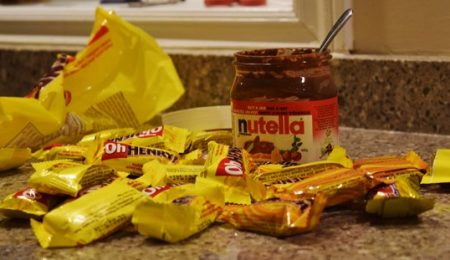Be cautious next time you eat your Wheaties
Britta Schiemann | Fulcrum Contributor
IT’S BREAKFAST TIME. Perhaps you would like some waffles, French toast, pancakes, cereal, or a freshly baked scone to calm that rumbling stomach? I thought so. These tasty treats are the front-runners of the breakfast world, and many of us consume them on a regular basis. We have fallen habit to justifying eating like this if we use whole wheat flour, buy multigrain bread, and purchase cereals that advertise the use of 100 per cent whole wheat. In reality, it’s time to rethink the supposedly healthy wheat that we put in our bodies.
Fact is, the wheat we eat today is not the wheat that our grandparents or parents ate 50 years ago. Wheat has been so genetically altered over the latter half of the past century that it cannot even survive on its own without human assistance. This should make you think a little—you are putting something into your body that is supposed to be good for you, yet cannot live without the help of humans. More importantly, the genetic chain of the wheat grain is genetically modified. This means that scientists have figured out a way to alter the wheat plant’s genetic code to make it grow stronger, faster, bigger, and in a way that is completely unnatural.
“Under federal rules, up to five per cent of the wheat kernel—which translates to about 70 per cent of the germ, where the majority of nutrients, vitamins and healthy fats are found—can be removed and the resulting flour can still be called whole wheat,” explains Carly Weeks, in an article in the Globe and Mail. “That means food manufacturers can label bread 100 per cent whole wheat even if they have removed most of the nutrient-packed germ.”
Another common modification of wheat is adding molasses to darken its colour.
Weeks also recommends being wary of unhealthy products that have a multigrain label stuck on the wrapper.
“Many unhealthy products, such as chips or snack foods, have jumped on the grain bandwagon, creating that sense that because they contain whole grains or multiple grains, they’re somehow better for us,” explains Weeks. “Goldfish crackers made with whole grains, for instance, have eight grams of whole grains per 20-gram serving. That means you would need to eat 74 crackers to get a full serving of whole grains.”
Luckily, there are a lot of wheat alternatives out there. Nowadays, if you know where to look, you can find all sorts of bread, pasta, and flour made out of brown rice, buckwheat, quinoa, chickpeas, almonds, and coconut. Of course these flours will not suffice if you feel like whipping up a wonderfully fresh French baguette, but for everyday meals, they’re great. Even if you don’t want to cut wheat out of your diet completely, take some time to think about how much of it you eat. There are many simple changes you can make to live a healthier, happier life, and this is one of them!



